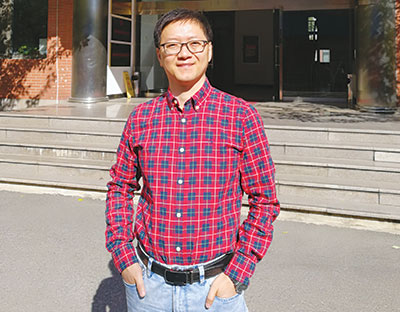 As one of seven national strategies for building a prosperous China, the Central government has been strongly supporting general education. For several decades, annual expenditure on education averaged a modest 2.5 percent of GDP. But in the new millennium it has steadily increased and in 2018-19, has risen to 4.4 percent of GDP which itself has grown five-fold during the three-decades past. However, the focus on universalisation of primary education has created long-standing shortage of skills needed in the job market and industry in particular. Therefore since the dawn of the new millennium, high importance has been given to establishing a modern vocational education and training (VET) system. With the Chinese economy continuing to record high rates of annual GDP growth while experiencing rapid urbanisation, the demand for skilled workers has exploded.
As one of seven national strategies for building a prosperous China, the Central government has been strongly supporting general education. For several decades, annual expenditure on education averaged a modest 2.5 percent of GDP. But in the new millennium it has steadily increased and in 2018-19, has risen to 4.4 percent of GDP which itself has grown five-fold during the three-decades past. However, the focus on universalisation of primary education has created long-standing shortage of skills needed in the job market and industry in particular. Therefore since the dawn of the new millennium, high importance has been given to establishing a modern vocational education and training (VET) system. With the Chinese economy continuing to record high rates of annual GDP growth while experiencing rapid urbanisation, the demand for skilled workers has exploded.
According to the latest 2018 ministry of education data, there are 10,000 secondary vocational/technical schools countrywide which admit 5.6 million students annually, i.e, 40 percent of middle school-leavers. These vocational/technical schools are of three categories: specialised high-academic-requirements secondary schools offering three-four year diploma programmes in subjects such as teacher training and finance; vocational high schools which train students for service industries offering three-year diplomas; and schools for training skilled workers offering one-three year programmes for carpenters, welders, electrical technicians, hairdressers and chefs.
These technical schools play a big role in training manpower with practical skills of various types and most of their graduates become workers with special skills. Graduates of these schools are in high demand. For instance, 46 percent of 30,000 graduates of Shanghai’s 75 secondary vocational/technical schools were recruited immediately after graduation in 2018. Most of the remainder students pressed on to enter tertiary-level vocational colleges.
At the tertiary level, there are 1,400 vocational colleges in mainland China. In 2018, 3.7 million i.e, 48 percent of all students enrolled in higher education institutions streamed into vocational colleges. VET colleges in China are divided into two categories — higher specialist colleges offering 3-5 year specialised study programmes such as medicine, public security, teacher training and finance requiring high Gaokao (national school leaving exam) scores for admission and higher vocational institutes which are practice-oriented and academically less demanding.
Established with the objective of preparing skilled managers and technicians, the mandate of tertiary VET colleges and institutes is to train shopfloor workers required by the country’s 500,000 major factories and manufacturing enterprises. Separate and distinct from China’s 1,500 universities, VET colleges offer three-to-five years’ vocational training, with graduates awarded diplomas which are highly respected by corporates, especially by the estimated 300,000 small-scale manufacturing enterprises countrywide. Moreover, diversion of middle school graduates into VET colleges and institutes has reduced the competition for university admissions even as it has alleviated shortages of skilled technicians and workers in infrastructure and manufacturing industries.
As in India and indeed worldover, in China as well VET diplomas don’t enjoy parity with university degrees in the public perception. Therefore in 2006, the ministries of education and finance jointly initiated a programme to construct 100 ‘model vocational colleges’, investing over 18 billion RMB (Rs.18,575 crore). These spruced-up VET colleges are equipped with excellent infrastructure and facilities comparable with China’s top-ranked universities.
Morever learning from foreign VET institutions and drawing upon the ‘dual-track system’ of Germany, excellent vocational education institutions of Australia and Canada, and following employment-oriented VET guidelines of the World Labour Organisation, China’s ‘modern apprenticeship system’, ‘teachers of double qualifications’ and the ‘integration of production and education initiatives’ have proved to be very successful. According to the 2019 Chinese Government Work Report, the total number of students in China’s 1,400 VET colleges and institutes will aggregate 4.7 million, 27 percent higher than in 2018.
Meanwhile, reform and upgradation of VET institutions continues apace. Research expenditure in vocational education has been enhanced and a number of research institutions established in several leading VET colleges such as the flagship Shenzhen Polytechnic. Although research and development budgets tend to be substantially smaller than of universities, and VET diploma holders don’t enjoy the same social status as university graduates because their full-time teachers usually lack industry experience making it impossible for them to deliver up-to-date knowledge and skills that industry and society require, there’s no doubt China’s belated vocational education and training initiatives have proved successful contributing hugely to the transformation of China into a major industrial and manufacturing superpower of the 21st century.
(Li Liang is deputy director of the Department of Foreign Language Books Publication of the Beijing Language and Culture University Press)
Also read: China: Unemployment spectre fears


























